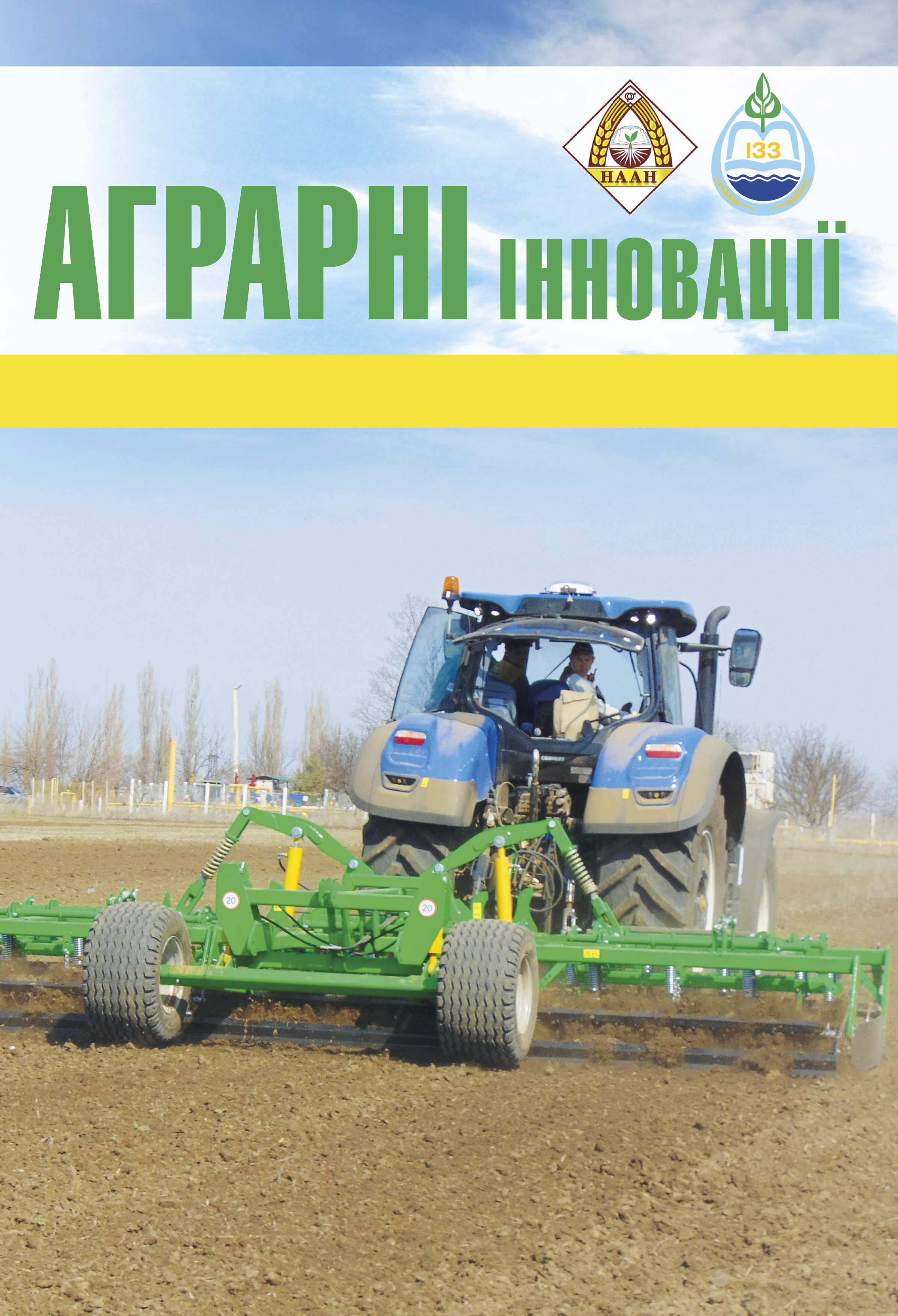THE INFLUENCE OF HERBICIDES ON THE YIELD OF CHICKPEA VARIETIES IN THE CONDITIONS OF SOUTHERN UKRAINE
Abstract
Purpose. To study the effect of herbicides on the yield of chickpea varieties in the South of Ukraine. Methods. Field studies were carried out in accordance with modern requirements and standards of research in agronomy and agriculture. Results. The article presents the results of the study of the influence of varietal characteristics and herbicide treatment on the morphometric and yield parameters of chickpea. The analysis of plant height, lower bean attachment height, number of beans, weight of 1000 grains, weight of grains per plant and total yield allowed to identify the most productive combinations of agronomic factors. The best results by all indicators were demonstrated by the variety Skarb under the action of the herbicide Racer (2.0 l/ha); the variant had the maximum plant height (45.7 cm), the largest number of beans per plant (8.1 pcs.), the highest weight of 1000 grains (342.7 g) and the level of yield (2.43 t/ha). Triumph variety showed average results with the effective action of the racer. Although characterized by lower baseline indicators, the Budzhak variety showed positive dynamics under the influence of herbicides, especially the racer. The use of herbicides allowed to significantly increase the yield of chickpea in all studied variants. Conclusion. In order to increase the yield of chickpea varieties Skarb, Budzhak, it is recommended to grow it against the background of the use of the herbicide racer at a dose of 2.0 l/ha. In case of unfavorable weather conditions or limited resources, it is allowed to use the herbicide Cayman as an alternative solution for weed control. However, the final choice of variety and herbicide should be based on a comprehensive analysis of the agroclimatic features of a particular region, determination of the species composition of weeds in agrophytocenoses and the overall farm management strategy to ensure maximum economic efficiency of chickpea cultivation.
References
2. Mahajan G., Chauhan B. S. The first report of chickpea (cicer arietinum L.) tolerance to paraquat in australia. Frontiers in agronomy. 2022. Vol. 4. URL: https://doi. org/10.3389/fagro.2022.969960
3. Boydston R. A., Nelson H., Chaves-Cordoba B. Tolerance of chickpeas to postemergence broadleaf herbicides. Weed technology. 2017. Vol. 32, no. 2. P. 190–194. URL: https://doi.org/10.1017/wet.2017.99
4. Kovalenko O. Culture of chickpea: elements of cultivation under irrigation conditions of the southern steppe of Ukraine. European science. 2023. Sge20-02. С. 118–136. URL: https://doi. org/10.30890/2709-2313.2023-20-02-016
5. Основи наукових досліджень в агрономії : навчальний посібник / В. М. Положенець, Л. В. Немерицька, М. М. Фурдига та ін. Житомир : ПП «Рута», 2024. 168 с. URL: https://repo.btu.kharkov.ua/jspui/bitstream/ 123456789/60064/1/NP_OND_ahronomiyi_24.pdf
6. Дисперсійний і кореляційний аналіз результатів польових дослідів : монографія / В. О. Ушкаренко, В. Л. Нікішенко, С. П. Голобородько, С. П. Коковіхін. Херсон : Айлант, 2009. 345 с.






